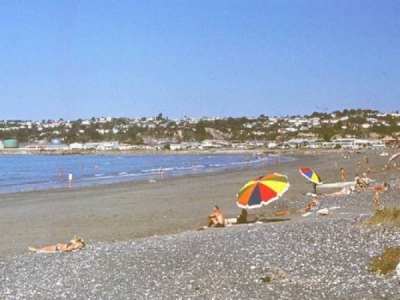
Posted on September 8, 2020
Most of us are adequately informed and doing our bit to address climate change but mitigation and the need for expertise and resources should be left to central government – not regional or city councils.
It is disappointing to find senior regional leaders overlooking extreme weather
events over the last 100 odd years and claiming future coastal erosion and inundation from reasonably expected similar events will be due to climate change.
Erosion at Napier’s northern beaches between Hardinge Rd and Bayview, first reported in 1978, is due to ‘sediment starvation’ and has nothing to do with ‘an act of nature’ or ‘climate change’.
Napier City Council (NCC), HB Regional Council (HBRC) Napier Port Ltd (NPH) and the Joint Council Coastal Strategy (JCCS) disagree. I believe history and local knowledge could have helped determine ‘the actual cause’ and establish ‘appropriate solutions’ years ago.
Early reports claimed the port breakwater was the ’cause’ for beach erosion until the HBRC started spending millions to prove the port was not responsible. Eventually the breakwater was discounted because it sheltered and benefited the northern beaches.
The next ’cause’ was the 1931 earthquake and the seabed until a buried 1944 US Navy marine contour map discredited the theory of a collapsed sand delta.
The Beach Nourishment Scheme that started in 1987 now involves trucking-in loose stones to replace eroded sand but it’s still not working. In 2017, both councils finally accepted this questionable solution is not ‘holding the coastline’ and conceded 70 metres of beach had been lost opposite Westshore School.
To them losing this once popular beach is fait accompli.
Submissions to NCC proved nearshore erosion exceeded 150,000m3 in 2011 and reached 404,000m3 in 2014 but council management dismissed the need to replenish the nearshore rather than nourish the upper beach. The need to address this unattended nearshore deficit was accepted in 2017 but I had to defend an absurd fabricated Breach of Conduct to get there.
The erosion problem goes back 47 years. In 1973, the port dredged around 300,000m3 of sand to form a 12m deep trench for vital harbour access. Maintenance dredging up to 2013 involved 1.5 million m3 of sand being dumped at offshore disposal zones, well away from beaches.
This huge volume of sand would have otherwise transported within the ‘northerly coastal sediment drift’ via the Marine Parade, around the breakwater and naturally replenished all beaches between Hardinge Rd and Tangoio. The evidence is conclusive.
The severe swell event in August 1974, with 7m waves off the breakwater measured by the port, did not erode or damage Westshore Beach because it was still in constant state of accretion. The nearshore was shallow, full of sand with a gentle gradient and spilling waves.
The entire sandy beach was resilient to high seas which contributed to accretion.
During this storm, a State of Emergency was declared from Clifton to Haumoana and 300ha was flooded at Clive while Westshore only had driftwood to clean up.
By comparison in 2015, 3m waves generated by Cyclone Pam on a mere 1.6m high tide with a steepened nearshore gradient and tumbling waves caused serious erosion and backshore flooding. A repeat 7m wave event on Napier’s sediment starved northern beaches will be devastating and cost millions.
The port CEO claimed the 1999 Kirk & Single Report exonerated the port but he would not release it in case needed for the Environment Court.
Finally, both councils accept the proper solution but delays and who pays the huge cost to get sand where it’s needed remains a problem for Napier ratepayers.
Larry Dallimore is a former Napier city councillor.
Source: nzherald.co.nz





